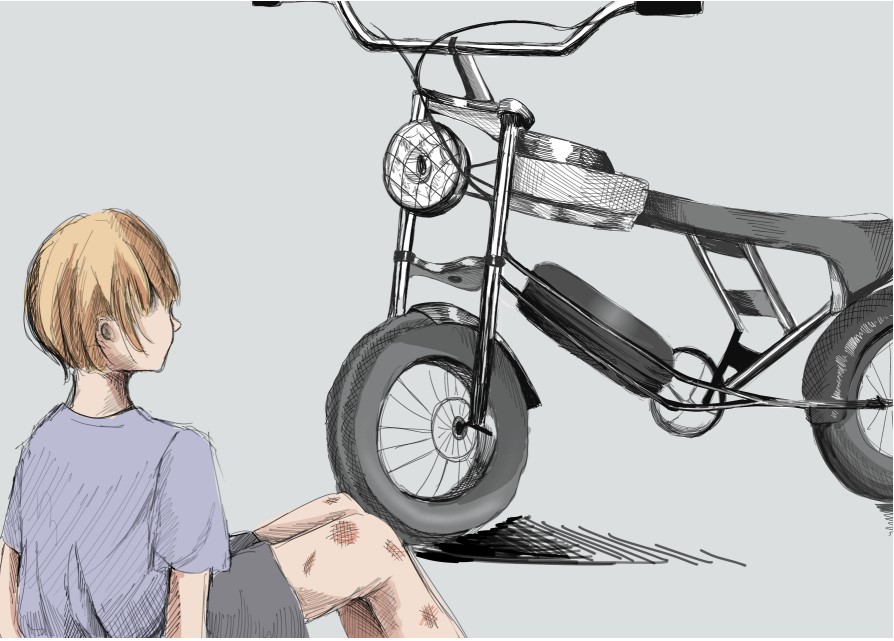Electric bikes, or E-bikes, are a growing trend and have been a cause for debate as more and more teenagers choose them as their preferred mode of transportation. According to the US Department of Energy, in 2023, California had 1,256,646 lightweight electric vehicle registrations, almost one million more than any other state.
Any Woodbridge or Irvine resident can attest that you can no longer go out for a walk without seeing at least one teenager heading somewhere on an e-bike. Additionally, the number of Woodbridge High students who choose to e-bike to school has increased quickly over the past few years.
This has become an important topic to people around the community due to the harm often caused by e-bike users, as many disobey traffic laws or endanger others in their activity. Though it is hard to deny that they are an efficient, energy-saving mode of transportation that is easy for teenagers and those too young for a car, there are better alternatives. E-bikes are an essential problem that must be solved before more injuries, and peace in the community is further disturbed.
The rise of e-bikes is a problem mainly due to how it affects others in the community. People are using e-bikes recklessly and dangerously, causing harm to many pedestrians and instilling fear in those around them.
According to Scripps.org’s article, there were 53,000 injuries from 2017 to 2022. The number of injuries caused by e-bikes is continuously increasing, and so is the number of deaths.
Those who ride e-bikes need to be informed of the rules so they may reduce the number of injuries they receive, but also the number of injuries that pedestrians receive because e-bikers are not following the rules of the road, such as road signs, staying in bike-lanes, speed limits, and pedestrian right of way.
Freshman Emelia Ruris-Kanegae shared her experience coming across reckless e-bike users, saying, “they often go way over the speed limit because they often don’t have to follow the speed limit, especially on sidewalks.”
Ruris-Kanegae also mentioned that she has “often had to jump out of the way, like the second before they go by,” contributing to the discussion of the danger they pose to other community members.
According to calbike.org, California’s new e-bike law classifies e-bikes into categories and regulates them differently based on which of the three types they fall in. Type three e-bikes, those which are pedal-operated and have a maximum speed of 28 miles per hour, are listed to have a minimum age requirement of 16 years old, and to require helmets for users of any age. Laws for types one and two also require helmets for anyone 17 years of age or younger.
However, a large issue arises where many users are not aware of or are choosing not to follow these rules, largely due to a lack of enforcement and serious consequences. Kids and teenagers all over
Woodbridge and Irvine as a whole can be seen riding on e-bikes without helmets, taking passengers without the necessary safety measures, and overall ignoring traffic laws.
Despite the risks e-bikes may pose, they help serve as a convenient form of transportation for people too young for cars. With only Type 3 e-bikes having age restrictions, kids of any age can gain access to an e-bike as an efficient alternative to walking, without the excessive energy needed for a regular bike.
Additionally, they can be helpful for those with certain health conditions by being “less physically demanding on the joints and muscles,” according to peopleforbikes.org and their article on E-bike
Health. Thanks to their functions allowing fast acceleration without the need to pedal, people who struggle on regular bikes can use e-bikes as a second option that allows them to travel with the same ease and efficiency, without the possible stress on joints.
Due to their use of electricity rather than gas, they are also more eco-friendly compared to other forms of transportation and have less of an impact on the environment. The webpage, “Are Electric Bikes Bad for the Environment?” from greenmatch.co.uk states that e-bikes produce 165 kg of C02e, and that “ebikes’ carbon footprint is significantly less than that of producing a small hatchback car, which requires 5.5 tons of C02e.” This means that e-bikes as an alternative to traditional cars have a significantly lower environmental impact and can greatly reduce carbon emissions.
In order for the e-bike problem to be handled well, there should be certain requirements put in place in order to buy and ride an e-bike. As the site “What Is an E-Bike? A Guide to California E-Bike Classifications” states, riders should be at least 16, and all riders under 18 are required to wear helmets.
To further prevent more issues, bigger consequences should be set in place when an e-biker breaks any law or rule. This way, there will be fewer people who feel inclined to ride carelessly as they’re more aware of the potential consequences they’ll face. Safer alternatives for e-bikes should be supported as well.
“Cycling – Health Benefits” proposes cycling as one of them, saying that ‘cycling is a healthy, low-impact exercise that can be enjoyed by people of all ages.’ The website also states that cycling
causes less strain/injuries and is good for one’s overall health. E-bikes are becoming more and more popular, especially amongst teenagers, and they are causing more harm to not only themselves, but the others around them. Although this may be a fast and efficient alternative to those who cannot drive yet, they harm the environment more than walking and riding a normal bike do.
For long term usage, normal bikes or walking is a better alternative as it will not harm the environment, but it will also keep pedestrians and themselves safe. In conclusion, in order to keep everyone safe, there should be certain regulations and consequences if the rider of the e-bike does not follow the rules of the road, or causes harm to others while sharing the road.












